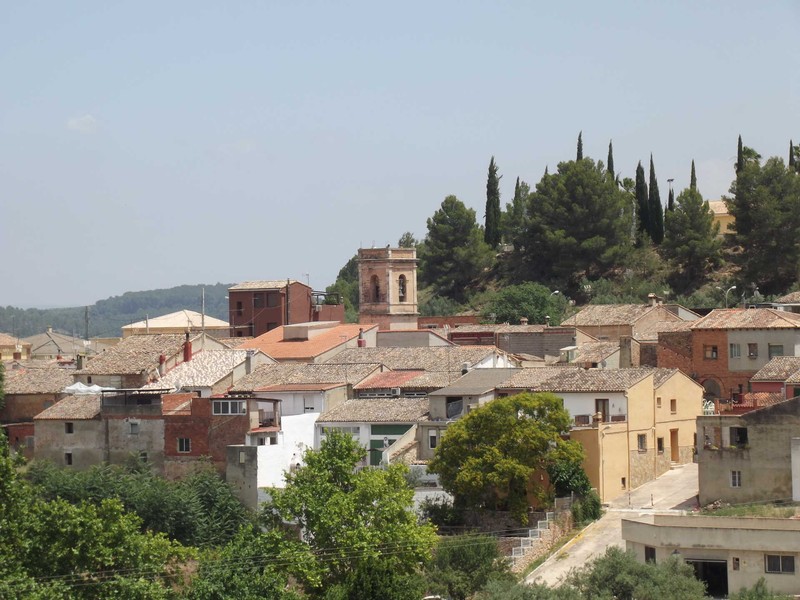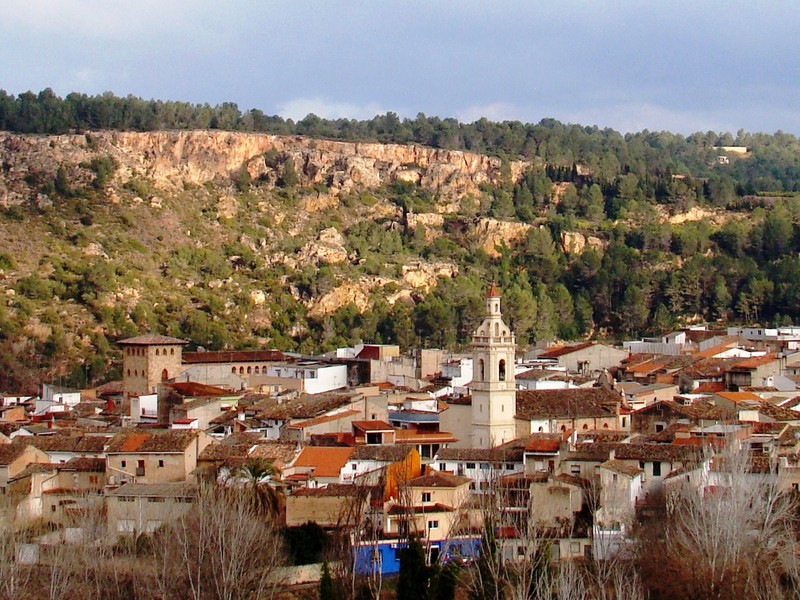Pico Caroche (Bicorp)
The Caroche or Caroig peak is a mountain of 1,126 meters, located in Teresa de Cofrentes, Spain. It is situated
The parish church of St. Anthony the Abbot is a classicist baroque style building, typical of the mid-18th century. It has a Latin cross floor plan with a non-emergent transept and side chapels between buttresses and a dome over pendentives in the centre of the transept. The chapels are formed by a succession of pilasters with Doric capitals and smooth shafts, with their corresponding entablature, which extend their lines towards the half barrel vault to divide it into different sections. The pictorial décor in this church, a product of refurbishment work undertaken in 1990, offers a combination of shades of blue and ochre. The four evangelists are painted on the pendentives of the transept and the presbytery houses a stucco altarpiece from the post-war period, with a design we could describe as leaving room for improvement, it replaced the baroque altarpiece that was burned by the revolutionaries in 1936. The central niche houses a carving of the church’s patron saint, St. Anthony, the Abbot. This and the other religious statuary, along with the altarpieces, date back to the years 1939 to 1942. Only a part of the side altar of the 18th-century altarpiece of the Divine Aurora, which was made from stone, is preserved.
The façade lacks décor of interest. Above it stands, as a replacement for the original belfry which no longer exists, an enormous bell tower that is more than 20 metres high, with a square floor plan and a four-sided slanted roof, on which sits a small cube-shaped roof lantern with the same type of roof. The tower dates to around 1980. The bell tower houses the small bell or that of the Christ of Health, a work by Salvador Manclús from 1967; the medium-sized bell or La Reserva, from the workshop of Gabriel Rivera Domínguez dates from 1988, and the large bell was cast by Los Hermanos Portilla in Gajano in 1991. The local association of bell ringers maintains the traditional of hand ringing these bronze bells. And an original clock by Manufacturas Blasco dating from 1956 has been restored and continues to work, although it needs winding every day.
The Caroche or Caroig peak is a mountain of 1,126 meters, located in Teresa de Cofrentes, Spain. It is situated
You will love La Canal de Navarrés! It’s an ideal destination for the whole family, to discover with friends, and

Estubeny, located in the interior of the province of Valencia, is an inland destination that hides a unique natural space,

Anna is a beautiful municipality in the Canal de Navarrés, well known for its Anna Lake, a lagoon surrounded by
Copyright © 2023. La Canal de Navarrés. All rights reserved.
Do not hesitate to contact us for any further information.
This website uses cookies so that we can provide you with the best user experience possible. Cookie information is stored in your browser and performs functions such as recognising you when you return to our website and helping our team to understand which sections of the website you find most interesting and useful.
Strictly Necessary Cookie should be enabled at all times so that we can save your preferences for cookie settings.
If you disable this cookie, we will not be able to save your preferences. This means that every time you visit this website you will need to enable or disable cookies again.